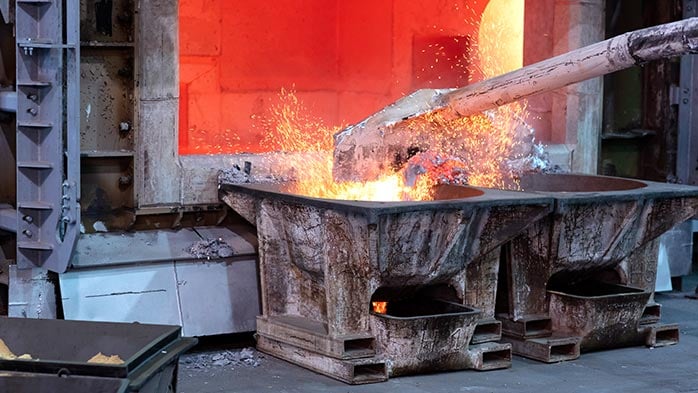Japan has historically been a major ferrous scrap exporter, but its export ability will become constrained by higher domestic demand and slower availability growth. Looking beyond the regional scale, we believe scrap is not the only solution to decarbonisation.
Japan has been a major scrap supplier to the global market
In the global scrap market, Japan is the third largest exporter after the EU and the USA. In 2022, Japan accounted for ~10% of the ~60 Mt of total exports from scrap net exporting countries. Most of Japanese scrap exports are destined for the Far East markets, with the largest volume going to South Korea and Vietnam. Before 2019, China was also within the main destinations for Japanese scrap, but the imposition of an import ban pushed volumes down in the 2019-2020 period. The ban was lifted in 2021, but China’s import volumes from Japan and other sources did not return to pre-ban levels as there are still high limitations on imports related to quality there. In the meantime, Vietnam emerged as an alternate market for Japanese scrap.
In the medium-to-long term, however, exports from Japan will face constraints due to growing domestic demand and slower supply growth, despite a tightening global scrap market.
Domestic scrap demand will rise despite lower crude output
To meet Japan’s policy target of carbon neutrality by 2050, scrap will play a key role in decarbonising the domestic steel industry. Japan’s EAF share of total crude production was around 24% in 2022. The initial actions of major producers to reduce emissions include raising the EAF share of their production, along with longer-term developments including mass production of high-grade steel in large-size EAFs.
In addition, with a large share of BOF production in Japan, increasing scrap rates in the BFBOF route is another applicable emissions reduction measure without major changes in the steelmaking process. CRU expects a continued increase in BOF scrap rates in the medium term.
Altogether, CRU forecast that Japanese scrap demand will increase at CAGR of 4% from 2022 to 2027, despite a declining trend in the country’s crude production in the medium term.
Lower supply growth to limit exports ability
The growth in Japanese scrap supply will become more restricted in the medium term despite the increasing demand. We see three main reasons for this:
- The obsolete scrap fund has been shrinking in the past two decades, and this downward trend will continue going forward. Obsolete scrap accounts for more than 60% of the total scrap supply in Japan. It comes from the end-of-life of steelcontaining goods including the scrappage of auto, machinery, and ships, as well as building demolitions. Taking a weighted average of different lifetime of major steel end-use products, obsolete scrap generation broadly correlates with steel consumption from ~20 years ago, and Japanese steel consumption has been structurally lower since the Global Financial Crisis of 2007–2008.
- Japan has a mature recycling industry, that was established in the 1970s with the government’s efforts to improve waste management law. Thanks to an efficient distribution channel and advanced processing technology, obsolete scrap recovery rates are already above 60% and further increases will be very limited.
-
Prime scrap supply that is generated by finished steel production and consumption is also not expected to increase as steel production is expected to contract.
What does it mean for trade?
Japanese domestic mills have been competing with scrap exporters for volumes. Therefore, the outlook of higher domestic demand and a tightening global scrap market has raised concerns among domestic buyers in terms of how to avoid losing out to exports.
Japan’s export destinations are mainly developing Asian countries, where steel production and scrap demand will continue to grow strongly as industrialisation and urbanisation proceed. But, due to increasing domestic availability and limited growth potential for Japanese exports, our base case forecast is that developing Asia will become more selfsufficient in scrap supply.
Export controls are gaining momentum in major scrap exporting regions. For instance, Russia has imposed an export tariff on scrap and raised the tariff rate further to disincentivise exports. Also, there has been a debate regarding the EU’s Waste Shipment Regulations and if its review would include restrictions on scrap exports.
However, we believe trade restrictions on scrap will hinder the decarbonisation progress, as a circular economy can only be achieved on a global scale. Also, the presence of contaminants in obsolete scrap will limit usage in some regions, thus, putting in trade barriers would not help secure the right raw materials to steelmakers. CRU’s steelmaking raw material subscribers can find more analysis on this topic in this Insight.
Scrap is not the only answer to decarbonisation
Despite being a good ally to reduce the carbon footprint of steelmaking, scrap is not the only solution to decarbonisation, especially with availability and quality as limiting factors. Therefore, besides the above-mentioned emission reduction measurements that require more scrap usage, Japanese steel producers are also investigating other technologies, including Carbon Capture, Utilisation and Storage (CCUS) and replacing coke with hydrogen in BFs. These are appealing options for large-scale BOF production, though costs and scalability are challenges to be overcome.

















